Don M. Winn's Blog, page 22
August 3, 2015
The Family Story, Part One: DNA Assisted Research
We all have regrets from our youth. I definitely have a few. Many of those regrets, however, didn’t become manifest until I was much older. Neither of my parents had siblings, but my grandparents had many brothers and sisters. The (great) Aunts and Uncles I spent most of my time with were advanced in years. I never thought much about it at the time, but now I realize that these dear elderly relatives were the only pipeline to all our family stories and history. Few stories were shared, let alone recorded, so most of that history has been lost.
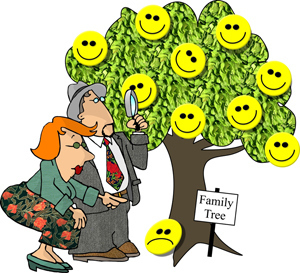 By the time I got interested in my family history, I had to start from scratch. I began with what I knew—which wasn’t much—building my family tree starting with my parents, grandparents, great-aunts, great-uncles, and the few second cousins I knew about. I contacted one cousin that I knew fairly well and was pleasantly surprised to discover that he knew a few things about my dad as well as some other family history. Later he sent me a letter with an old handwritten document of my dad’s that listed three generations of the family. My family tree had just tripled in size! That was an exciting find. From there I was able to locate another cousin that had been working for years doing family research and he shared all of his discoveries with me, opening up several more generations and branches on my family tree.
By the time I got interested in my family history, I had to start from scratch. I began with what I knew—which wasn’t much—building my family tree starting with my parents, grandparents, great-aunts, great-uncles, and the few second cousins I knew about. I contacted one cousin that I knew fairly well and was pleasantly surprised to discover that he knew a few things about my dad as well as some other family history. Later he sent me a letter with an old handwritten document of my dad’s that listed three generations of the family. My family tree had just tripled in size! That was an exciting find. From there I was able to locate another cousin that had been working for years doing family research and he shared all of his discoveries with me, opening up several more generations and branches on my family tree.
After that, progress came to a grinding halt. We could only verifiably go back so far. Anything beyond that was purely guesswork. Suffice to say, not much happened with my family research for several years.
Enter ancestry DNA. I didn’t really have ancestry research in mind when I submitted a DNA sample to 23andme.com, but as soon as the results came in all of that changed. I learned things about my ancestry that I didn’t know and discovered over 900 DNA matches from third to distant cousins. It was exciting! The family research that had been languishing for years had just gotten a shot of adrenalin.
Note: If you’re concerned about privacy, the only information displayed about your DNA matches is the person’s gender. Everything else is private unless you decide to share more in your public profile. You do have the option to send an introductory message to a DNA match, which they can either respond to or ignore.
Soon after I got my results, I was contacted by a cousin, Patricia Divjak, who is a professional genealogist. I readily responded to her message and it didn’t take me long to find the connection. DNA not only confirmed most of what I knew to be true on my family tree, but it also showed what I had wrong, the lineage that was guesswork, and pointed me down a new path of connections.
Here’s how DNA helped us make the connection.
This story began with a little booklet that one of our mutual cousins compiled with names and dates of the children of James and Mary Ann Winn of Lunenburg County, VA. James was one of the nine sons of Daniel Winn of that same county. James married his cousin (common at that time), Mary Ann Winn. Together they had 12 children!
James (born 14 Apr 1757 – died 14 Jun 1815) fought in the Revolutionary War eventually attaining the rank of Sergeant, quite a respectable rank for those who served in the Continental Line. He served under Lt. Col’s James Hendricks, Charles Simms and Colonel Thomas Elliott, 6th Virginia Regiment from Lunenburg County, VA.
After Patricia learned the particulars of James’ and Mary Ann’s parentage and their early life together, she was curious about how our mutual cousin acquired all the names of their children. To make a long story short, it was acquired from the old Winn family Bible. With a LOT of phone calls and leg work she was finally able to locate the cousin in possession of the family Bible. The Bible was passed down through one of James son’s, Archelaus Winn. We believe that it was Archelaus’ wife, Susannah, who entered all the information in the Bible. [See page from the Winn Family Bible.]
Fast forward to today! Descendants of five of the sons of James and Mary Ann have tested through either 23andMe.com, AncestryDNA or Family Tree DNA (FTDNA) and the autosomal comparison of their DNA with Patricia’s DNA verifies that these cousins match genetically through comparison of our family trees and our strong DNA results. This is how Patricia and I met, through our DNA match at 23andMe. Since we both had an established family tree to compare, it was fairly easy to find the connection. I am a descendant of James and Mary Ann’s son Younger Winn, brother to Patricia’s ancestor, Archelaus Winn—verified with the DNA results.
It’s important to note that in autosomal DNA comparison, the Winn cousins who matched Patricia may not necessarily match me. Autosomal DNA is randomly inherited. I may match with different Winn cousins than Patricia. When we put everything together however, we have a more accurate and complete picture of the early colonial families and their relationships.
 Ancestry DNA is still a fairly new concept to me and is probably new for most of you reading this blog. Patricia has generously agreed to be interviewed for this blog about ancestry research and DNA. Next week in Part 2 of The Family Story, Patricia will talk about how DNA ancestry works and how it’s being used to reconstruct missing family history. In Part 3, she’ll discuss ways that parents and grandparents can begin sharing their family stories with their children.
Ancestry DNA is still a fairly new concept to me and is probably new for most of you reading this blog. Patricia has generously agreed to be interviewed for this blog about ancestry research and DNA. Next week in Part 2 of The Family Story, Patricia will talk about how DNA ancestry works and how it’s being used to reconstruct missing family history. In Part 3, she’ll discuss ways that parents and grandparents can begin sharing their family stories with their children.
About Patricia Divjak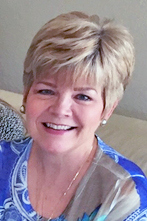 Patricia Divjak has been active in genealogy research for 20 years and is the author of two family history books. She is an expert lineage researcher, assisting over 75 women in joining the National Society of Daughters of the American Revolution. She was a successful Past Regent and Registrar for the San Diego Chapter, NSDAR. She is also a member of the Jamestowne Society and the Colonial Dames of the Seventeenth Century as well as the National Society Daughters of the War of 1812. She is a member of the International Society of Genetic Genealogists. Her current project is a compilation of stories of her female ancestors and how they inspired generations of their descendants to follow their dreams.
Patricia Divjak has been active in genealogy research for 20 years and is the author of two family history books. She is an expert lineage researcher, assisting over 75 women in joining the National Society of Daughters of the American Revolution. She was a successful Past Regent and Registrar for the San Diego Chapter, NSDAR. She is also a member of the Jamestowne Society and the Colonial Dames of the Seventeenth Century as well as the National Society Daughters of the War of 1812. She is a member of the International Society of Genetic Genealogists. Her current project is a compilation of stories of her female ancestors and how they inspired generations of their descendants to follow their dreams.


July 21, 2015
Star Trek Axanar: If There’s a Will, There’s a Way
One of the distinguishing characteristics that sets humans apart from other life forms is our need for and love of story and narrative. We each have a story to tell, and we want to hear the stories of others. We develop our sense of self and our place in the world through narrative and history. We want to learn about people from the past. How did they influence us, beyond causing our birth? We imagine the future and all its possibilities—our possibilities. We connect with and ground our humanity as we interweave our narrative with past and future narratives.
Those who struggle with dyslexia or other reading challenges are no different, although they have a harder time reading and writing. If parents and educators can help these students develop a love of story, it’s the strongest motivator to help them doggedly persevere as readers and writers. Simply stated, without such perseverance, our stories will go untold. It’s imperative that we use as many avenues of communicating stories as possible to inspire the next generation of readers.
And when someone goes to heroic effort to make sure a story is well told, it’s all the more inspiring.
When I was a child, reading was torture to me, but television and film sparked my love of story. I particularly loved programs that stimulated my imagination, those which explored ideas that were futuristic, adventurous, and visually appealing. My favorite program (which I never missed!) was Star Trek. I’ve enjoyed the franchise ever since. It was love for this particular type of story that got me excited about a studio-quality independent Star Trek film that is solely funded by donations from fans. The film, currently in production, is called Star Trek Axanar.
Alec Peters, executive producer and star of Axanar, has graciously agreed to be interviewed about Star Trek Axanar and how his passion for telling a great story has made an idea into reality.

Steve Inhat portrayed Garth of Izar in the the original series episode “Whom Gods Destroy”
Don: What can you tell us about Axanar?
Alec: Axanar is a groundbreaking independent film that proves that a studio doesn’t need to spend millions of dollars to produce a feature quality production. Axanar will be the first non-CBS/Paramount produced Star Trek to look and feel like a true Star Trek movie.
The story of Garth of Izar, a character only seen in one episode of the original Star Trek, is one I first wrote 20 years ago. It wasn’t until 3 years ago, after playing Garth in the well-known Star Trek: Phase II fan film, that I turned the story into a screenplay.
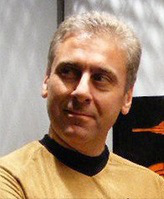
Alec Peters as Garth of Izar in the fan film Star Trek: Phase II
Making a fan film was not of interest to me. I decided that if I was going to make Axanar, it needed to look like a real film. And fortunately director Robert Meyer Burnett (Free Enterprise) wants to do the same thing. Making a cutting edge version of Star Trek, that honors, the original, is what we want to do.
Axanar has already begun to attract attention from Star Trek fans who want to see something new and innovative that honors the Star Trek they grew up on. If hundreds of thousands of fans are willing to see fan films that recreate TOS (The Original Series), then there is a huge appetite for something new and original and professionally made.
Pre-production is well underway and Axanar is scheduled to begin filming in Los Angeles in January of 2016 with a tentative release in spring/summer of 2016.
Don: The world of movies and television traditionally involve a process that limits access to smaller creative teams or projects. How has thinking outside the box enabled you to tackle such a groundbreaking project?
Alec: Well, having a minuscule budget, we have relied on professionals and amateurs who are fans of Axanar to help build out our teams. The Art Department is the most significant of these. From concept art to graphic art to web design to 3D set design, we have about 20 artists, most professionals, some talented amateurs, who donate their time.
We keep getting talented people who see what we are doing and decide to donate their time. It is the only way we can do this. As Rob Burnett always says, we are making a $100 million movie on 1% of that. So you need to be smart and leverage your fan base.


 Don: How did the story come together?
Don: How did the story come together?
Alec: I wrote my first Garth story 25 years ago. But it wasn’t until I started collecting screen used props & costumes from Star Trek and started Propworx that things changed. In 2010 I bought the original costume Steve Inhat wore as Garth. I happened to be talking about costumes one day with James Cawley, of Star Trek, Phase II and I mentioned the costume. We discussed how great a character Garth was and how it was a shame that they had never explored the character more.
Then James said “Well, you know we are shooting an episode called ‘Origins’ which is about Kirk at the Academy and that was the time of Garth. We should add him into the script.” And I said “You should!” to which James said “Well, you should come play him!” So I did, and you can see that clip here. While at lunch with James one day during the shoot, I told him about my story and he said I should produce it. And that started me on a journey, that is now, 5 years later, finally seeing a culmination.
 The first step in that journey was writing a treatment. I got through the first 3 acts of that treatment, which takes you up to the actual battle, and I sent it to Marco Palmieri, who had just left Pocket Books where he had served as editor of all the Star Trek books. His feedback was amazing. Most importantly he felt Garth actually needed more of a story arc. Marco felt that the best Star Trek pilots were ‘The Cage’ and DS9’s ‘Emissary’ because they have great arcs for their captains. In each, the captain is struggling with their career and their choices and the story propels them to explore that struggle. I immediately realized I had to explore Garth further.
The first step in that journey was writing a treatment. I got through the first 3 acts of that treatment, which takes you up to the actual battle, and I sent it to Marco Palmieri, who had just left Pocket Books where he had served as editor of all the Star Trek books. His feedback was amazing. Most importantly he felt Garth actually needed more of a story arc. Marco felt that the best Star Trek pilots were ‘The Cage’ and DS9’s ‘Emissary’ because they have great arcs for their captains. In each, the captain is struggling with their career and their choices and the story propels them to explore that struggle. I immediately realized I had to explore Garth further.
I then signed up for a screenwriting class with the godfather of Hollywood screenwriting coaches, Robert McKee. I am a pretty good writer, but I knew nothing about writing a screenplay. Well 4 days with Robert McKee and you learn a lot. I had already read his classic book “Story!” and so the seminar, which was the suggestion of Star Trek: Phase II’s Doctor McCoy, John Kelley, really expanded my understanding of writing for the screen.
And I was off. I got the first three acts done in about 6 months, and then it took me a good year to get Act 4 done. During this time I got to be friends with Dave Galanter who has written a number of Star Trek books for Pocket Books. He worked as my story editor and helped me immensely. Act 4 took a long time as it was a real struggle what to do with the battle. I simply didn’t want it to be like anything we had seen before. The biggest battles we had seen in Star Trek are in Deep Space Nine in the war with the Dominion, and frankly they are pretty weak. Just lots and lots of ships beating each other up and punching through shields as if they weren’t there. UGH. So I started researching space combat online and by reading the first three of David Weber’s Honor Harrington novels. Those were really good and helped me envision a different type of Space Combat.
Don: Who are the cast members and how did they become part of the Axanar project?

Kate Vernon, JG Hertzler, Gary Graham, director Chris Gossett, Alec Peters, and Richard Hatch at “Prelude to Axanar” premiere at San Diego Comic Con 2014
Alec: I first approached Richard Hatch, who was my acting coach, and asked him to play Kharn. He loved the idea. And with Richard on board, JG Hertzler was next. He likes Richard a ton, and so he joined as soon as he heard Richard was on board. Then Gary Graham jumped on board, then Kate Vernon and finally Tony Todd. And now that we have Prelude to Axanar to show, it is easy to get talent.
Don: What challenges have you faced?
Alec: Money is the biggest. People don’t understand how expensive this project is. The donors who pay attention, read our crowd funding campaigns thoroughly, read the updates, and want to be involved, are our biggest supporters. But when donors don’t actually read the info, then their expectations are unrealistic. We try and really keep everyone involved and communicate everything we can so people are fully informed.
Don: Did you ever imagine that you would become an actor and producer when you were a child?
Alec: Never, it is something totally unexpected! But I like trying new things and embracing new challenges.
Don: What in your childhood inspired you?
Alec: I was born in 1960 so grew up in the space race and watching the Apollo program. I think that is what truly inspired me. Like many my age, I wanted to be an astronaut and so loving Sci Fi was natural.
 Don: Do you have advice for parents today in encouraging their children to pursue their passions?
Don: Do you have advice for parents today in encouraging their children to pursue their passions?
Alec: Just that! Pursue what you love. Parents are so often concerned about preparing their kids for a career or structuring their lives. Just let your kids follow their dreams and give them the tools to make good decisions. If they do that, they will be happy!
Don: Where/how will the movie be distributed?
Alec: Online only. And donors will get Blu-rays/DVDs if they donated for them.
Don: Where can people get more information about Axanar and to make donations?
Star Trek Axanar Webpage: http://www.startrekaxanar.com/
To donate: http://www.savethefederation.com


July 3, 2015
A Visit to the Sammy Brown Library in Carthage, Texas
The Sammy Brown library in Carthage, Texas, is a beautiful two-year-old facility that was founded by the service group called the Carthage Junior League. Building this library was a huge endeavor, completely supported by volunteer labor and donations. Now co-owned by the city and the county, it is an incredibly important part of this small community and a beautiful, welcoming building that made me, for one, excited about reading.
Carthage is a town where the love of reading is nurtured and fostered. Although fewer than seven thousand people live in the area, the circulation of this small-town library matches that of Longview Texas, which boasts 81,000-plus residents.
Story time is every Wednesday at 2 o’clock throughout the year and is actively supported both by preschoolers and a substantial group of home-schooled children.
Each year during summer vacation, the library features special programs to keep kids involved in reading. Children’s Coordinator Kim Speer-Turner encourages young readers to keep a reading log in order to track the time they spend reading. They collect stickers for time spent reading, and when they accumulate a full log of stickers, they receive a prize. Prizes are also given out for returning books by their due date. Author visits are sponsored by Chevron International during the summer months to give kids a personal experience with the writing world.
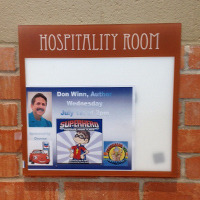 This summer’s theme is “Superheroes: Every hero has a story.” My book Superhero was one of the books featured in July. I was invited to do a reading of Superhero and share a presentation about another hero of mine, Sir Kaye, the Boy Knight. The young attendees and their parents joined in the discussion about life in the middle ages, castles, and what makes a person a hero. It was a lovely, attentive group, and the gracious residents of Carthage made me feel right at home.
This summer’s theme is “Superheroes: Every hero has a story.” My book Superhero was one of the books featured in July. I was invited to do a reading of Superhero and share a presentation about another hero of mine, Sir Kaye, the Boy Knight. The young attendees and their parents joined in the discussion about life in the middle ages, castles, and what makes a person a hero. It was a lovely, attentive group, and the gracious residents of Carthage made me feel right at home.
I want to commend this charming small-town library for its stellar staff and their excellent work in cultivating a love of reading and books. It was a pleasure to see the results it has had on the kids of Carthage!
 Learn more about the Sir Kaye, the Boy Knight middle reader series.
Learn more about the Sir Kaye, the Boy Knight middle reader series.
Learn more about Superhero.
Read a review of Superhero, the award-winning picture book.


July 1, 2015
Why Doesn’t My Child Want to Read?
 Many parents have children who are struggling or reluctant readers. Just like an unusual blood test can be a sign of an underlying medical problem, a reluctance to read can also be a sign of a larger issue. Discovering the reason(s) why a child doesn’t want to read can help parents address the problem effectively.
Many parents have children who are struggling or reluctant readers. Just like an unusual blood test can be a sign of an underlying medical problem, a reluctance to read can also be a sign of a larger issue. Discovering the reason(s) why a child doesn’t want to read can help parents address the problem effectively.
Some of the likely reasons:
Reading is hard. Whether you suspect dyslexia (a decoding problem), ADD/ADHD (a focus problem), or sensory processing issues (a wiring problem), the key is to get solid diagnostic assistance from trained professionals. Each situation requires different interventions and support. The earlier interventions begin, the better.
See some of my previous blogs for more information.
Understanding Your Dyslexic Friend/Child/Spouse/Student
Dyslexia Presentation: A Few Facts From The Big Picture Documentary
Alleviating the Complications of Shame for Dyslexic Children
Tools and Strategies for Dealing with Dyslexia: Reading Aloud
Creative Writing and Dyslexia: A Worthwhile Challenge
Everyone Fails at First
Reading isn’t cool. Modern society glamorizes life: things have to be bigger, better, louder, move violent or exciting, 3-D, holographic. Is it any wonder that today’s youth find reading words off a page, and using one’s own imagination to enter the story, dull by comparison? If you suspect this is part of your child’s less-than-enthusiastic response, tell them about your favorite book or story. Many of us can name a book that actually changed our life. Let your children see your enthusiasm for books and reading.
Cultural pressure. In some realities, fewer than average people read well or seek higher education. If books and reading are not a ‘thing’ where you are from, it can feel unsettling or even disloyal for a youth to become a reader. Cultural expect
 ation is a powerful thing. If you, as a parent, are a struggling reader, consider sharing with your children some of the ways your life would have been easier if you had abundant opportunity to improve your reading and comprehension. Speak about reading as a desirable thing in the hearing of your children.
ation is a powerful thing. If you, as a parent, are a struggling reader, consider sharing with your children some of the ways your life would have been easier if you had abundant opportunity to improve your reading and comprehension. Speak about reading as a desirable thing in the hearing of your children.Other activities are more fun. If your child is more interested in his iPod, Wii, or Xbox, consider his favorite games/music as a window into current interests. Talk with him about what he likes about certain games or other entertainments. Search for books on similar topics. The Young Adult Library Services Association has many excellent recommendations on books that have shown wide appeal to other reluctant readers.
Many teachers and librarians have found my own Sir Kaye books helpful in inspiring enthusiasm in reluctant readers. Check out one of my earlier blogs to find out why:
How Heroes of Self-Reference Can Help Struggling and Dyslexic Readers
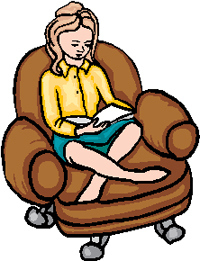 Above all, parents can help by demonstrating a love of books and reading. Share interesting gems that you have read with your kids. Read with them and to them. Get them their own library card. Buy them a special book for their own shelf. Make some time this summer to grow as readers together. Your life and your relationship with your children will much richer because of it.
Above all, parents can help by demonstrating a love of books and reading. Share interesting gems that you have read with your kids. Read with them and to them. Get them their own library card. Buy them a special book for their own shelf. Make some time this summer to grow as readers together. Your life and your relationship with your children will much richer because of it.


June 10, 2015
The One-Eyed Babysitter
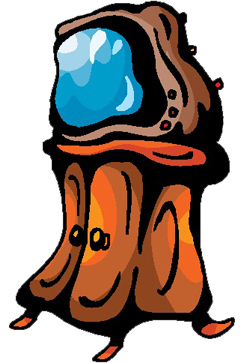 Summer is upon us, as is the task of keeping the kiddos occupied now that school is out. Since most parents work full time, keeping kids gainfully engaged poses a real conundrum. Most home or day-care routines inevitably involve lots of screen time: TV, iPad/tablet time, the computer.
Summer is upon us, as is the task of keeping the kiddos occupied now that school is out. Since most parents work full time, keeping kids gainfully engaged poses a real conundrum. Most home or day-care routines inevitably involve lots of screen time: TV, iPad/tablet time, the computer.
Whether we call it the Idiot Box, the One-eyed Babysitter, or technology, I was staggered by some photos in a recent Huffington Post article. Photographer Donna Stevens has created a series of images entitled “Idiot Box” that captures the transmogrification of children from bright-eyed whirling dervishes to near-comatose zombies.
The inspiration for the series came from watching her own son morph as a result of his iPad usage. (The family iPad somehow became his iPad, she states.)
Kids from her son’s preschool became part of the project. Each was allowed to select a favorite show from Netflix, and the photo shoot began. “They say photographing kids is hard work but this shoot was simple,” she explained. “I experienced firsthand the power of the screen as it lulled my subjects into a TV-coma before my lens. None of them talked or moved during the shoot. I didn’t direct them in any way. And even though I was positioned right in front of them with my camera, they barely noticed me.”
The disquieting images show an alteration that seems so unnatural—curiosity and excitement normally wedded to engagement in an activity was quickly replaced with almost frightening changes. The cold bluish light of the screen highlighted glazed eyes, slack facial contours, mouth breathing, and unheeded drooling. The article calls the images “unsettling,” and that they are.
View the images on Donna Stevens’ blog.
Almost all of us watch TV or use tablets and computers at times. And I’m certainly not saying that all screens are evil and to be avoided. That’s not practical or realistic. But parents desiring to raise alert, inquisitive, centered kids who interact well socially and have a sense of possibility about themselves and the world would do well to make judicious use of these forms of entertainment.


June 1, 2015
Dad and Superhero
This is the time of year when many people show appreciation for their dad on a special day. Although it’s been over 30 years since my dad passed away, thoughts of him and what he meant to me stay with me year-round.
 I have many great memories of my time with dad, but the most poignant ones are of the scary times when I needed reassurance. At those moments, my dad was my true hero. Whenever I was frightened or in over my head for any reason, I knew that I could call on my dad and he would be there for me.
I have many great memories of my time with dad, but the most poignant ones are of the scary times when I needed reassurance. At those moments, my dad was my true hero. Whenever I was frightened or in over my head for any reason, I knew that I could call on my dad and he would be there for me.
“With this story, [children] will realize that anyone can be a hero, not just men in capes. By helping someone in need, you become a hero.”
—Family Review Center
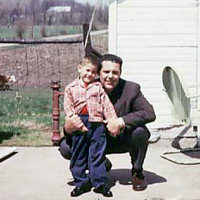 I wrote Superhero in remembrance of my dad. He was always my superhero. In this book I pay tribute to my love for him, and hope to remind all parents that taking the time to reassure your children through their fears and insecurities will create a bond with them that lasts their whole lives.
I wrote Superhero in remembrance of my dad. He was always my superhero. In this book I pay tribute to my love for him, and hope to remind all parents that taking the time to reassure your children through their fears and insecurities will create a bond with them that lasts their whole lives.
So if you know a boy whose dad is his hero—or a girl who thinks the world of her dad—check out my book Superhero and share it with them.
Both books are available from either Amazon or BarnesandNoble.com.


May 18, 2015
How to Minimize Summer Learning Loss
 When I was in elementary school I couldn’t wait for summer vacation. Being dyslexic only made my longing for summer break more intense because school was very stressful for me. During the carefree summer I stayed busy with lots of outdoor activities, family vacation, and time with friends. I thought very little about school or the need to maintain what I’d struggled so hard to learn during the school season.
When I was in elementary school I couldn’t wait for summer vacation. Being dyslexic only made my longing for summer break more intense because school was very stressful for me. During the carefree summer I stayed busy with lots of outdoor activities, family vacation, and time with friends. I thought very little about school or the need to maintain what I’d struggled so hard to learn during the school season.
The truth is that all children, dyslexic or not, face an unintended consequence of the summer break from school—a “summer slide” or learning loss.
In 2011, the RAND Corporation published a study describing how United States students lose an average of one month’s worth of learning in reading and math skills over the summer. Lower income students may lose up to two months of learning during the summer because they often don’t have as much access to vacations or other educationally stimulating venues.
Let’s do the math: if the average school year lasts 8 months, and two months of education could be lost each year based on the summer slide statistic, potentially 25% of the school year’s value in critical areas like reading and mathematics could simply vanish—evaporating into thin air. (That is potentially 60 days of getting the kids up, getting them dressed and fed, dealing with homework drama, packing lunches and getting everyone out the door mostly on time…days you probably didn’t want to go through all that hassle, but you did anyway, because that’s what you do…it would be a shame for all that hard work to go to waste, right? Keep reading.)
The educational stakes for children are high, because these educational losses actually compound summer after summer. According to the study, 20% of third-graders in one state could not read at grade level. By the eighth grade, the number of students reading below grade level had increased to 33%. The accumulation of several years’ worth of summer reading loss greatly contributes to these statistics.
How can learning-loss be minimized while still allowing kids to enjoy summer?
The good news is that small efforts to counteract the summer slide bring big returns. If a student reads as few as five books during the summer, it can prevent learning loss in reading skills. What can you do to help your children?
Read to your children or to a child you know. There is no better way to encourage reading than to read aloud with our young ones.
Encourage an interest in reading. This is more challenging for students with dyslexia or other learning differences. Talk with your kids and discover what their interests are. Ask a lot of “why” questions, and then find the answer together through reading—using online sources counts too. It’s still reading.
Foster a sense of achievement. Colored stickers, gold stars, or other marks of completion can encourage kids to compete with themselves to read more and more.
When kids get together over the summer, have each child take a turn talking briefly about things they have read. It doesn’t have to be a long complicated discussion. Sixty to ninety seconds about each book is enough to stimulate an interest in reading among other kids in the community. This also gives the kids who have read books something to share that they can be proud of.
For children who really struggle with reading, or who cannot imagine reading ever being pleasurable, check your local library for audiobooks. Listening to books can be a real inroad into the heart of the challenged reader. The more they can develop a love of story, the more they will be inspired to discern their own learning and reading style and overcome their limitations. If they enjoy audiobooks, it can help dispel some negative emotions they may have previously associated with the idea of reading for pleasure.
This summer, as each family finds more fun reasons to read, I look forward to hearing from you on my Cardboard Box Adventures Facebook page. Let me know when you read your five books (or your first summer book, or your second…), including audiobooks. Which ones did you read? What did you like about them? Would you recommend them to others? Let’s make this a great summer! Happy Reading!


May 13, 2015
Sir Kaye and the April 2015 Harmony School Author Visit
 I recently had the privilege of visiting Mrs. Leslie Linsday’s ESL classes at The Harmony School of Science in Austin. This is the second year Mrs. Lindsay has incorporated my Sir Kaye series as part of their semester reading project. Last year the classes read The Knighting of Sir Kaye, and this year it was the newly-released second book in the series, The Lost Castle Treasure.
I recently had the privilege of visiting Mrs. Leslie Linsday’s ESL classes at The Harmony School of Science in Austin. This is the second year Mrs. Lindsay has incorporated my Sir Kaye series as part of their semester reading project. Last year the classes read The Knighting of Sir Kaye, and this year it was the newly-released second book in the series, The Lost Castle Treasure.
 Students read weekly assignments from the book and listened along with the audio version. Then each student chose a Sir Kaye project from the Idea Board to share with the class. I thoroughly enjoyed seeing their Sir Kaye projects. It’s not surprising that most of the students chose to do something visual, and as you can see from some of the pictures, there are artists in the making.
Students read weekly assignments from the book and listened along with the audio version. Then each student chose a Sir Kaye project from the Idea Board to share with the class. I thoroughly enjoyed seeing their Sir Kaye projects. It’s not surprising that most of the students chose to do something visual, and as you can see from some of the pictures, there are artists in the making.
During my visit this year, I provided students with a handout with some Sir Kaye (The Lost Castle Treasure) trivia and we talked about some of their favorite moments in the book, but mostly the students got to ask me questions. They asked about every aspect of medieval life, including, writing, researching the books, falconry, castles, and the list goes on. There were more questions than we had time for.
Mrs. Lindsay was eager to answer questions about how her ESL classes have benefited from using the Sir Kaye books.
Don: What is the goal of ESL (as opposed to just having them learn with all the other students)?
Mrs. Lindsay: The goal of ESL is to provide “intensive instruction” in the domains of reading, writing, listening, and speaking to non-native speakers of English. We have over 20 different languages spoken on our campus, and intensive instruction in English-only allows the students to become submerged in English all day long so they can learn quicker.
We work on academic and social aspects of learning, which includes being able to communicate with friends as well as grasp difficult academic concepts. It takes 1–2 years to become fluent in social everyday aspects of school and life, while it takes 6–10 years to develop full cognitive academic language proficiency.
Don: How have you utilized the Sir Kaye books in your classroom?
Mrs. Lindsay: I use the Sir Kaye books in my ESL Classes to encourage a love of reading, and to focus on comprehension. While we read, I stress sequence, making predictions, and asking questions. We annotate notes as we read, and short answer quizzes are given periodically to ensure students are comprehending and following along with the story. We read some of the chapters aloud, listen to some chapters on audiobook, and the students read some of the book on their own. Students color the Sir Kaye coloring sheets while listening to the story on audio, and identify and write about what is going on in each scene depicted in the coloring sheets. Having a wholesome story to discuss is definitely helpful, and one less thing for the teacher to worry about.
Don: How have the ESL students benefited from using the Sir Kaye books?
Mrs. Lindsay: The book series is a great way to teach morals, values, and life lessons. The characters cooperate, rely on each other, and work together. Using the Sir Kaye series keeps my lessons fresh and interesting so that students learn more than if they were just reading through a textbook. The fact that the author makes a visit after we complete the book and final project, is a wonderful culminating point, and one the students look forward to and remember for a long time.
Don: Would you recommend the Sir Kaye books for other schools?
Mrs. Lindsay: I would certainly recommend the series for ESL and Non-ESL students. It’s a great learning tool, and having access to additional resources like the audio book, coloring pages, and author visits make the series super special. I give it a big thumbs up!!
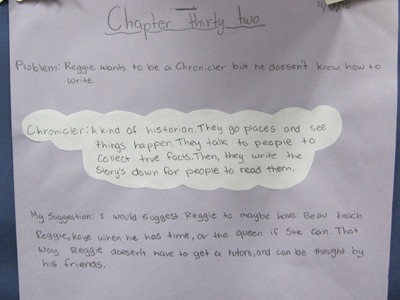 I always enjoy my author visits at Harmony School of Science in Austin and I’m looking forward to next year’s visit with Mrs. Lindsay’s ESL classes featuring the third book in the Sir Kaye series, Legend of the Forest Beast, planned for release in December, 2015.
I always enjoy my author visits at Harmony School of Science in Austin and I’m looking forward to next year’s visit with Mrs. Lindsay’s ESL classes featuring the third book in the Sir Kaye series, Legend of the Forest Beast, planned for release in December, 2015.
Find out more information about the award-winning Sir Kaye series.
If you’re an educator and would like to inquire about having an author visit or would like more information, please email me, Don Winn at author@donwinn.com
Book discounts are available directly from the publisher.
Here are some trivia questions for The Lost Castle Treasure:
Vocabulary
What are falcon mews?
What kind of hawk is Oriana?
What is a gauntlet and why is it so important to wear one when handling falcons?
What is a trencher?
What is mutton?
What is a chamber pot?
What is a pigge pot?
What is a pomander ball?
Story
 Why did Kaye want a quest?
Why did Kaye want a quest?What happened to the castle treasure?
How did the old king try to tell the new queen where to find the treasure?
How does Reggie figure out what the clue was a picture of?
What was hidden inside the hollow falcon statue with the missing eye?
What was the silent arrow?
Why does Knox owe Eldridge money?
Why is Kaye in danger of losing his knighthood?
What is the only way for Kaye to keep being a knight?
Where were many of the secret passages hidden?
Feelings
How did Reggie feel when Melchor and Milo started calling him Dogtail?
How did Kaye make Reggie feel even worse?
Why was Kaye so mean to Reggie and Beau during the story?
Do you admire Reggie and Beau for going to look for Kaye even though he was mean to them? Why?
What does Reggie realize about people and why he should be kind to them?
If you’d like the answers to any of these questions, let me know!


May 7, 2015
The Family Table Part 2
As promised, here���s a list of suggestions of small changes families can incorporate over time to help start a regular practice of cooking and eating together and making mealtime a time for refreshment and family:
Buy some cherry tomatoes and let the kids help wash them. Enjoy together.
Steam or saut�� some broccoli or spinach.
Look online for easy recipes that contain vegetables, legumes, or whole grains. These will be nutritious and the most budget friendly. Mark Bittman’s book, “How to Cook Everything Fast” is a great reference.
If you see someone at the grocery store with veggies you don’t recognize, ask them how they prepare the vegetable. Most will be happy to share the vegetable love!
YouTube offers many instructional videos for food prep and cooking.
Peel ripe bananas, freeze in zipper bags, and puree in a blender or food processor to make “ice cream” for a healthy dessert.
Delegate the task of setting the table every night.
Make meal preparation something you do together. Kids that help prep and cook foods are more likely to eat them, even if they’re prepping foods that are new to their diet.
Have a family conference about the fact that dinner as a family is going to part of your daily routine. Older kids usually get used to fending for themselves, and schedule other activities during the dinner hour, but once they see that there will be a nice meal, and that there will be a chance to talk and express themselves, they can adjust their schedule to be home.
Offer fresh fruit or nuts for snacks
Refer to “11 Proven Ways to get Kids to Eat More Vegetables“
Agree to a moratorium on electronic devices while at the table together. Set the example. Instagram and Twitter will still be there after dinner.
Don’t go it alone: invite friends to bring over a dish they enjoy, and share a simple meal together.
Make mealtime together pleasant. Don’t use this time together to talk negatively about things (or people), and save major disciplinary redirection for another venue.
Make a project of learning about another culture. Indian, Middle Eastern, Indonesian, Chilean. Get some library books or comb the internet for ideas on indigenous foods and cooking styles, then pick a couple of dishes and prepare them together. You may discover some new favorites!


April 30, 2015
The Family Table Part 1
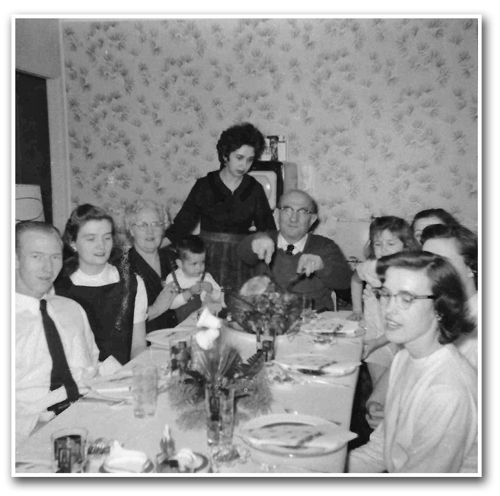
Here’s a rare photo of a family meal with friends. At the far end my grandfather is carving the meat and my mother is standing just to his right. My brother and sister can be seen next to them. I was still a twinkle in my mother’s eye….
At my house, we eat home-cooked fresh vegetables daily. My wife and I enjoy experimenting with cooking by preparing the veggies in many different ways���for instance, trying out recipes from a broad variety of cultures. We are adventurous eaters, eager to try new plant foods, seasonings, herbs, and cooking styles.
I recently attended a gathering with some friends, some old, and some new. As is often the case at these affairs, it was a “pot-luck” dinner with each family contributing a dish. An interesting intersection of cultures ensued.
One friend had deep-fried a turkey. Another made a green salad. Someone brought yams baked in a sweet syrup. There were cheesy mashed potatoes and green beans with ham. My wife had made roasted vegetables (radishes, golden beets, and Brussels sprouts) with tahini dressing and Z’atar. She had also made fresh chimichurri sauce as a hostess gift to serve alongside the turkey. As folks went through the buffet line, it was interesting to hear their questions and observations about the food. Most people had seen a Brussels sprout, but many had never seen golden beets, or conceived of roasting radishes (or indeed any vegetable). No one knew what Tahini was, nor had anyone heard of chimichurri sauce. And we won’t even talk about the Z’atar.
We both fielded questions about Middle Eastern food, the origin of the spices and sauce on the veggies, as well as the Argentinean custom of serving vinegary, parsley-and-cilantro-laden chimichurri sauce with meat that figures so prominently in South American culture. Its digestive benefits were discussed. Our fellow diners found that they liked these new foods, and some asked for cooking instructions.
Then the conversation turned to cooking in general. Several agreed that life was already too demanding to add grocery shopping and food preparation to their list of things to do. When we asked what they did for their meals, most replied that they either grazed or ate takeout. Turns out that preparing and sharing a real meal of home-cooked foods together was a rarity for most of our friends.
I realize that with the hectic pace of life, preparing and sharing healthy meals as a family might be a luxury, but it is one well worth doing whenever possible. Food prepared thoughtfully by loving hands and shared together with loved ones is one of the most family-supportive activities we can pursue. We get to spend quality time in conversation, hearing about each other’s day. We get to experience other cultures through embracing their different styles of cooking and eating. We literally create shared chemistry through shared foods. The frenetic pace of living slows down, we have a deep breath or ten, and we feel calmer and more satisfied. We leave the table rested, nourished, recharged, and ready to take on the next tasks in life.
Maybe cooking a full meal together isn���t practical for your family. Maybe you can’t or don’t like to cook, or maybe every family member is on a different schedule. Perhaps your finances are limited. How can you work with these issues? Small changes, implemented over time, seem to be the best bet. Check back next week for a few ideas that can get families cooking and/or eating healthy foods together in small ways.















